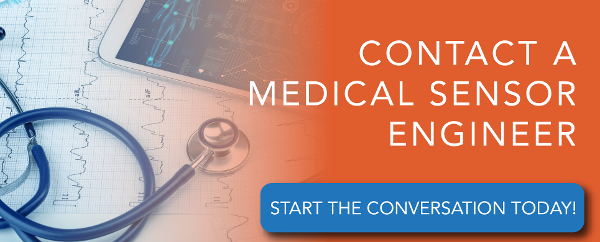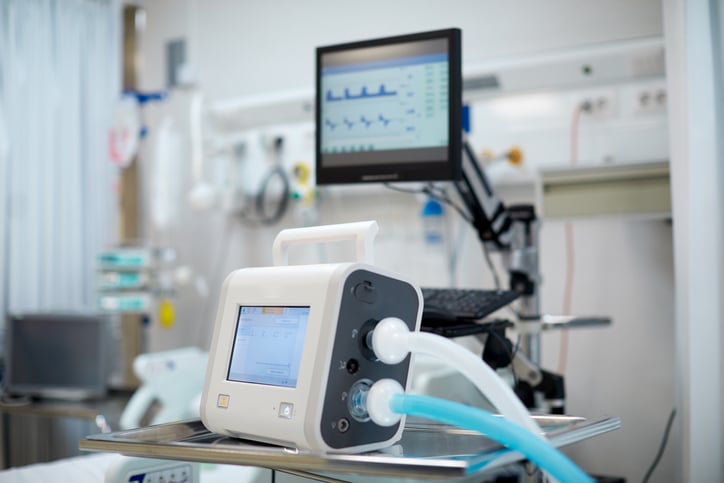Sensors in Medical Devices: Controlling Temperature in Laser Surgery

Despite how common they've become for patient treatment, the use of lasers as a surgical tool can still feel like something out of science fiction. Once considered futuristic, laser-assisted surgery is now a widely used approach for highly controlled procedures.
That precision comes with new challenges, particularly in managing temperature. Without accurate, real-time heat readings, safety and effectiveness can quickly slip out of reach.
This is where sensors in medical devices, including advanced temperature monitoring devices, come into play. These tools give surgical teams the data they need to respond quickly and maintain control throughout each procedure.
Sensors in Medical Devices: The Link Between Safety and Laser Surgery
Compared to traditional surgeries of just a few decades ago (which relied on incisions with scalpels and sutures to close the wound) the use of lasers allows for minimally invasive procedures with fewer risks of complications and shorter recovery times.
However, the concentrated beam of light that is the laser delivers an intense amount of heat — something the human body is not designed to withstand extended and unchecked exposure to. Surgical lasers can reach temperatures of up to 1,000℃.
In the most basic sense, just like in critical care,precise temperature control is needed to avoid thermal damage to surrounding tissues during laser surgeries. The risks involved cannot be overstated.
When temperatures exceed certain thresholds, cells can suffer irreversible damage, leading to scarring, nerve damage, and other serious injuries. Temperatures outside of safe ranges also pose a threat to the medical professionals operating the laser. Like the patient, the surgeon is vulnerable to extreme and prolonged exposure.
This is why sensors in medical devices — particularly those designed for patient temperature monitoring — are so important. These technologies allow surgical teams to track and respond to heat levels accurately during laser-assisted procedures.
Types of Sensors in Medical Devices for Laser Surgery
While temperature monitoring in laser-assisted surgeries plays a direct role in patient safety, different types of sensors in medical devices may be selected based on their application and the level of precision required.
Broadly, temperature sensors used in laser procedures fall into two categories: contact and non-contact, each with unique strengths depending on the device’s design and monitoring environment.
Contact Temperature Sensors
-
Thermistor: a type of resistor that exhibits a large and predictable change in resistance in response to changes in temperature. They are often used in temperature measurement and control circuits because they are highly sensitive to small changes in temperature, but can be susceptible to self-heating effects.
-
Thermocouples: temperature sensors that are made up of two wires of different metals that are welded together at the sensing end. When this junction is exposed to a temperature differential, it produces a voltage that is proportional to the temperature difference. Thermocouples are often used in high-temperature applications because of their durability and accuracy.
-
Resistance Temperature Detectors (RTDs): made of a metal wire, usually platinum, that changes resistance as its temperature changes. They are very accurate and stable over time, but are generally slower to respond to changes in temperature compared to thermocouples and thermistors.
Non-Contact Temperature Sensors
-
Infrared Temperature Sensors: These sensors measure temperature without physical contact by detecting thermal radiation and converting it into an electrical signal. As non-invasive sensors in medical devices, they provide fast, surface-level temperature readings during surgery and diagnostics.
-
Fiber Optic Temperature Sensors: Using optical fibers, these sensors detect changes in how light is transmitted through the fiber as temperature shifts. They’re often chosen for application temperature sensor needs in harsh or electromagnetically sensitive environments. These temperature monitoring devices are especially useful in settings where traditional electronic sensors may struggle.
Temperature Mapping with Sensors in Medical Devices
While the data provided by a body temperature sensor during a laser-assisted surgery is invaluable, it's only half the picture of heat’s presence.
The other half? Temperature mapping.
As its name indicates, temperature mapping is the process of creating a real-time presentation of the temperature in various areas of a patient’s body during laser surgery. While its focus is the immediate area where the laser is being used, it also looks at those nearby that might be affected by the beam's heat or the beam itself.
To perform temperature mapping during surgery, two main techniques are used: imaging and catheter-based temperature mapping.
-
Imaging techniques use specialized cameras to capture the changes in temperature during surgery. These cameras are designed to detect thermal emissions from the body and display the temperature in false colors on a computer screen, allowing physicians to visualize the temperature distribution and adjust the laser settings accordingly. In a very literal sense, imaging techniques is heat vision.
-
Catheter-based temperature mapping involves inserting a thin catheter into the body during surgery to take temperature readings at different locations. These catheters are equipped with custom miniature sensors that detect changes in temperature and transmit this information to a computer in the operating room. This technique provides more accurate temperature measurements in specific areas of the body but can be invasive and may require additional time.
Applications of Sensors in Medical Devices for Laser Surgery
Despite being a newer method for patient treatment, laser-assisted surgery is finding its place as an effective way to deliver precise and highly accurate medical care.
Its applications in healthcare have taken a few forms:
Laser Ablation
During this procedure, a high-intensity laser beam is directed at the targeted tissue, causing it to heat up and vaporize. This process allows surgeons to remove tissue with a high degree of precision, without damaging surrounding healthy tissue so long as temperatures and heat exposure are carefully monitored and adjusted.
Surgical laser ablation can be used in a variety of procedures, including the removal of skin lesions and tumors, as well as treatments for cancers such as:
-
Prostate cancer
-
Breast cancer
-
Liver cancer
What's more, it's a minimally invasive procedure that can offer patients a faster recovery time and reduced risk of complications compared to traditional surgical techniques.
Cosmetic Surgeries
While not as serious as other procedures, laser-assisted cosmetic surgery is a growing field.
Many non-invasive laser procedures have become very popular in recent years, and some of the most common include:
-
Hair removal
-
Lipolysis
-
Skin resurfacing
-
Rhinoplasty
Like ablation, cosmetic laser surgery also boasts a faster recovery time and less of a chance for complications during and after a procedure.
Endarterectomy
During this procedure, a surgeon uses a laser to remove plaque buildup from the inner lining of an artery, restoring blood flow and reducing the risk of heart attack or stroke. The laser is directed through a catheter, a thin tube inserted into the artery through a small incision.
Laser-assisted endarterectomy can offer several advantages over traditional surgical techniques, including:
-
Reduced blood loss
-
Less damage to surrounding tissue
-
A shorter recovery time
Frequently Asked Questions about Sensors in Medical DevicesHere are some of the most frequently asked questions about sensors in medical devices: Q: How are temperature thresholds determined for different types of laser surgeries?A: Temperature thresholds are established through clinical research and controlled testing that examine how different tissues respond to heat. Each tissue type — such as skin, nerve, or muscle — has a specific thermal tolerance, and these thresholds guide safe operating ranges during surgery. For example, nerve tissue is more sensitive and has a lower damage threshold than denser tissues like muscle. In practice, these limits are defined by observing when cellular damage begins under varying conditions and then applying safety margins to account for variables like blood flow or duration of exposure. Surgeons and device engineers rely on these thresholds to program laser settings that avoid thermal injury while still achieving the desired clinical outcome. Q: What are the regulatory or safety standards for sensors used in laser-assisted medical devices?A: The FDA typically regulates temperature sensors in medical lasers as Class II devices, requiring premarket notification and demonstration of safety and effectiveness. They must also meet standards for electrical safety, biocompatibility, and sterilization, including ISO 13485 and IEC 60601-1. In Europe, CE marking under the Medical Device Regulation (MDR) signifies compliance with similar safety and performance requirements. Before approval, manufacturers must submit documentation covering testing data, quality controls, and risk assessments to verify that the sensor performs reliably in surgical environments. |
Sensors in Medical Devices Make Laser Surgery Possible
With technology shaping nearly every part of patient care, laser-assisted surgery stands out as a clear example of how treatment continues to move forward.
But while these procedures offer precision and efficiency, they depend on steady, responsive temperature control. Sensors in medical devices make that possible by providing the data needed to monitor heat and adjust in real time.
As these systems advance, so will the performance and reliability of the medical sensors that support them.
Bring Precise Temperature Control to Your Medical Laser Devices
Book time with one of our engineers today:





